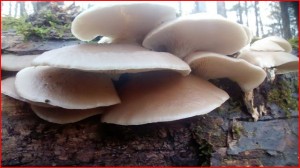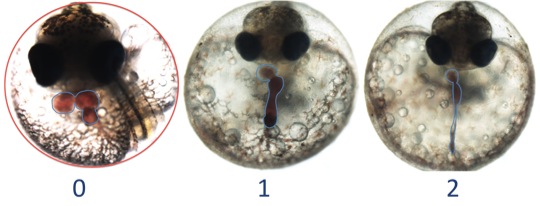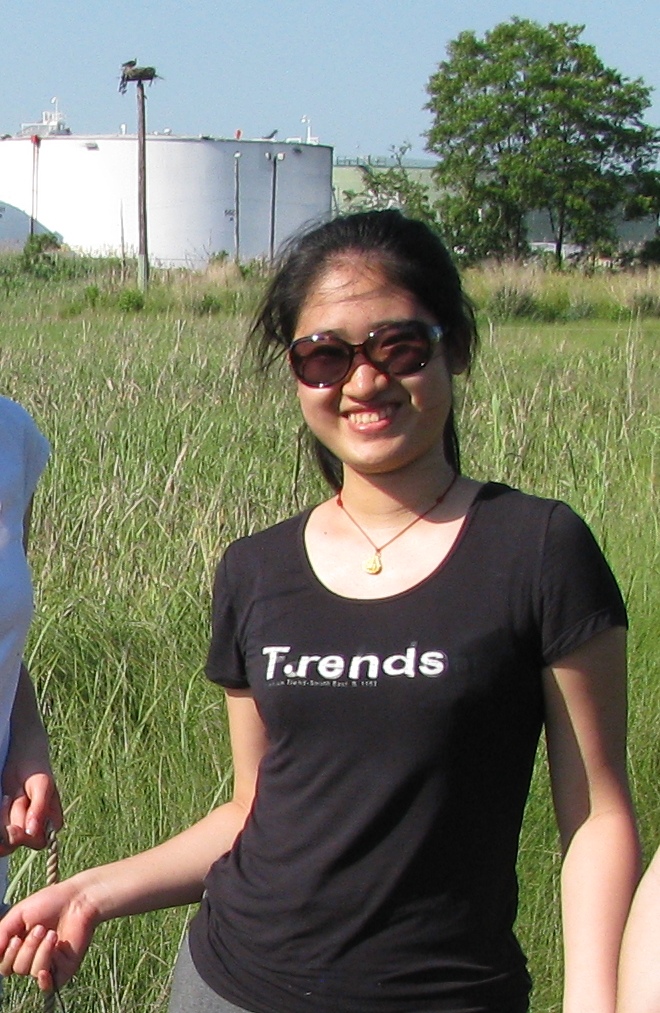By Lauren Czaplicki
Why am I writing about fungi and Superfund sites? This post fits into a larger series on remediating (cleaning up) polluted sites and, since fungi are found in a lot of places, we’re going to explore how they might be a useful tool for remediation.

Walk into the forest, or even your backyard, and look at the tree trunks. Do you see those mushrooms growing on the trees? Kick up some leaf litter. Do you see those white root-like threads? These are the kinds of fungi I’m looking for when I visit the Atlantic Wood Industries Superfund (AWI) site. These fungi, along with their relatives, the edible shitake, portabella, and oyster mushrooms, are capable of breaking down complex soil contaminants. AWI is polluted with PAHs, which are one of the contaminants these fungi are able to break down! These fungi can break down PAHs because of the way they digest their food (wood) using enzymes. They release enzymes into the environment hoping that they’ll contact wood and break it down into digestible, smaller bits.
But AWI isn’t contaminated with wood, so how does that help clean up sites like AWI? Well, wood contains polymers, such as lignin and cellulose, which are pretty complex. These look a lot like other complex contaminants, such as PAHs. The fungal enzymes aren’t picky about what they digest and will break down anything they come in contact with in the hope that it’ll degrade into something they can eat (a fungal sugar). They’ll even digest the contaminants found at the AWI site. This makes them very desirable to remedy sites where the contamination is particularly difficult, and when there’s the desire to be sustainable and low cost. Fungal bioremediation may be a sustainable way to take large pollutants and transform them into simple compounds that pose less of a hazard. As always, the byproducts should be tested for toxicity before any implementation can go forward, but a step away from the cancerous parent-compound is often good.
Imagine you’ve just moved to a new place and you’re expected to go to work right away, be productive, and write a book in the first week when you haven’t gotten your house set up, running water, electricity, or anything unpacked. You won’t be as productive as someone who doesn’t have those adjustment stresses to deal with. Similarly, native microbes are adapted to the specific conditions at the contaminated site, and are more likely to be productive than foreign microbes. Thus, I want to see if there are already useful fungi at the AWI site that I can help. This act of altering site conditions to help specific native microbes grow is known as biostimulation. Since there’s been contamination at AWI for years, there’s a likelihood that fungi have evolved to survive with high levels of pollution. The next step in this fungal biostimulation adventure is to look at what fungi are there and how they grow. People have tested lots of different fungi against lots of different contaminants. Mycologists (fungi scientists) have gone to great lengths to characterize the myriad ways fungi grow. Once I know which fungi are at AWI, I’ll have a better idea of how to help them grow. I’ve isolated several fungi from the site and am testing them for enzymes involved in degradation. Preliminary analyses suggest that they have the enzymes, but we’ll know soon if these fun guys (pun!) degrade our PAHs. Then I’ll look to the growth literature, design a pilot-scale reactor that satisfies fungal needs, and watch for degradation on a larger scale. It may be only a matter of time until fungi are cleaning up other sites with complex contamination!

Lauren Czaplicki is a PhD student studying environmental process engineering at Duke University





